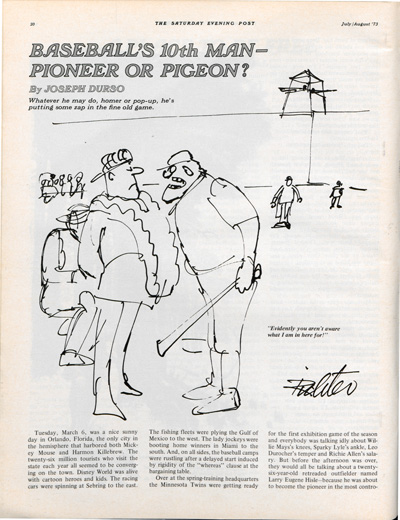tidychangepoint
a unified framework for analyzing changepoint detection in univariate time series
Benjamin S. Baumer, Smith College
Universitat Politècnica de Catalunya
2025-06-27
Changepoint Detection
Changepoint Detection Problem (CDP)
- Given a time series \(y = \{y_1, \ldots, y_n \} \in \mathbb{R}^n\)
- A set of indices \(\tau = \{ \tau_1, \ldots, \tau_m \} \in [1,n]^m\) is a changepoint set
- Find the changepoint set that minimizes some penalized objective function (that acts on \(\tau\))
Why is CDP hard?
- Search space is exponentially large (\(2^n\) possible changepoint sets)
- Many different ways to model the time series (parametrically)
- Many different penalty functions (e.g., BIC, MDL, etc.)
- No real “ground truth”
Ex. 1: History of the designated hitter

Ex. 1: Controversy
Ex. 1: Difference in HR rate
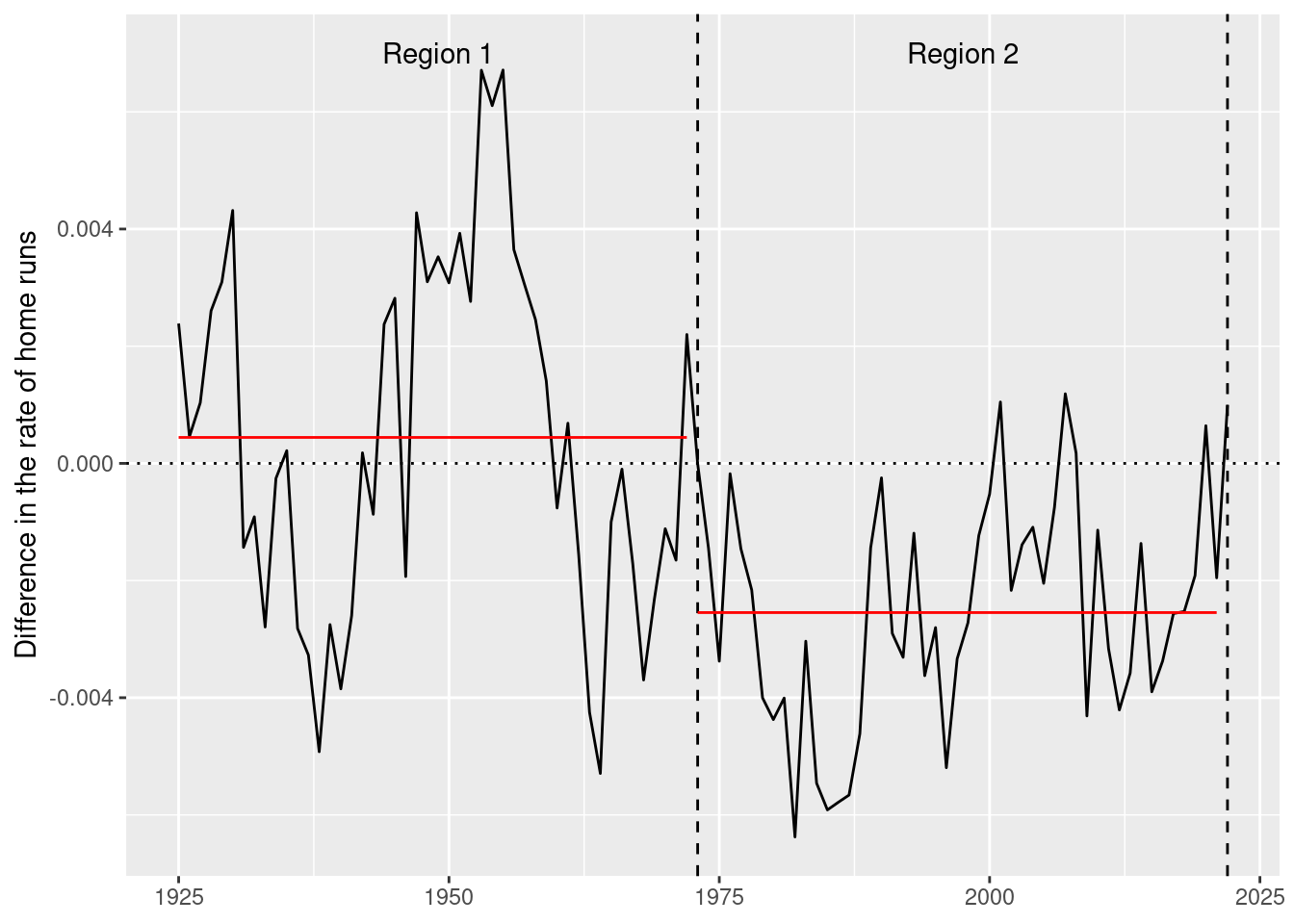
- True changepoint is known (1973)
- Can we find it?
Ex. 1B: Expert-defined eras

Ex. 1B: Modeling-defined eras

Ex. 2: Particulate matter in Bogotá
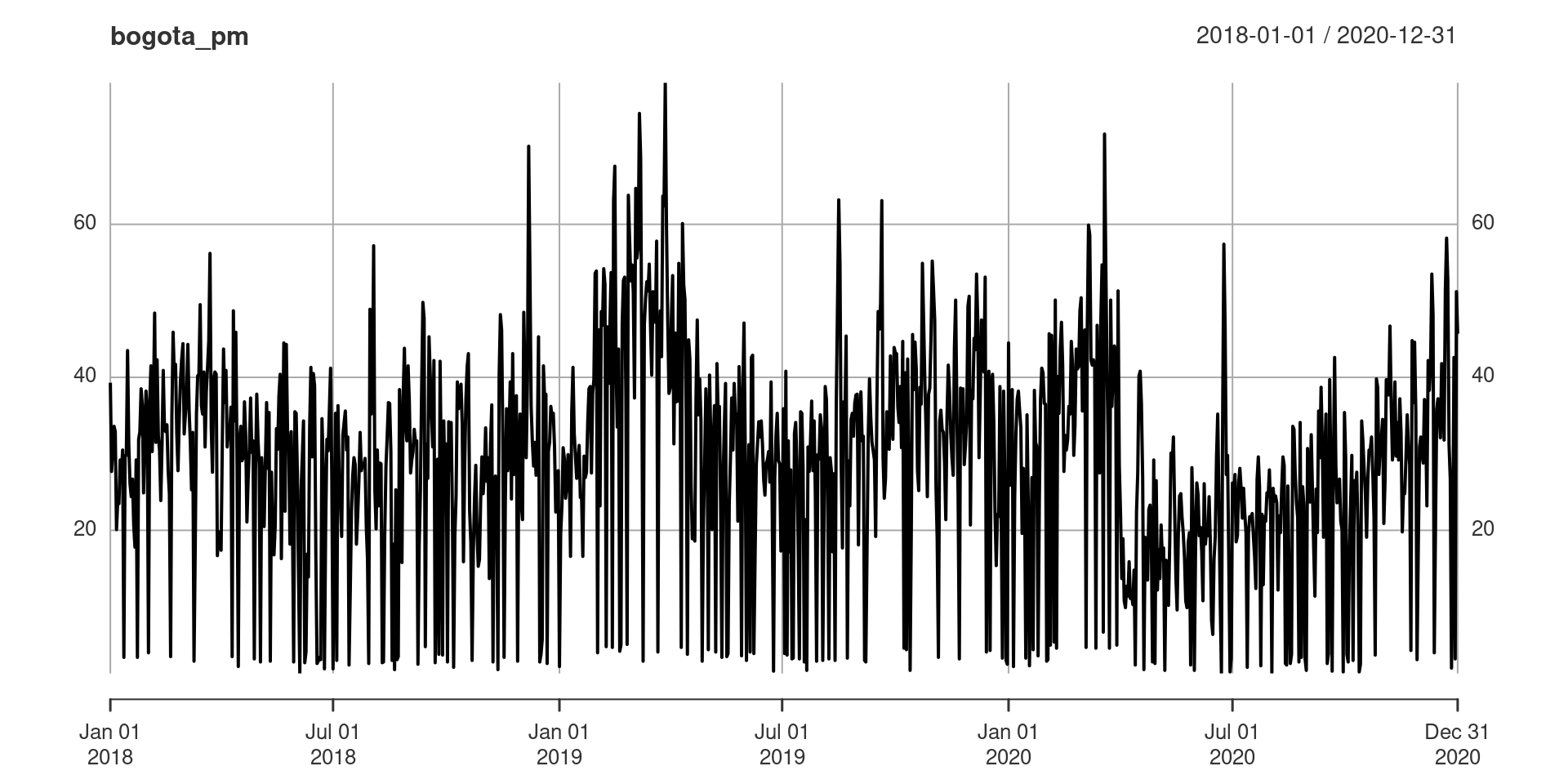
- True changepoints are unknown
- Can we find them??
What constitutes a solution?
Every solution includes three components:
- An algorithm to search the space (e.g., PELT, Binary segmentation, etc.)
- A (parametric) model to describe the data-generating process
- A penalized objection function to be optimized
Current state-of-the-art algorithms
- PELT (Killick, 2012)
- polynomial time, exact solution
- mild conditions
- Genetic algorithms (e.g., Shi, 2022)
- flexible, but heuristic and can be slow
- Other approaches
- Bayesian methods
- Coen’s algorithm (Suárez-Sierra, et al., 2023)
Models
- For now, parametric: \(M(y | \theta)\)
- Given the data \(y\) and changepoint set \(\tau\), find optimal \(\hat{\theta}_\tau\)
- Ex: “meanshift” model:
- regional means (\(\mu_i\)), national variance (\(\sigma^2\))
- \(\theta = \{ \sigma^2, \mu_0, \ldots, \mu_m \}\)
- Normal distribution
Penalized objective function: BIC
- Bayesian Information Criterion (BIC)
- \(k_M(\tau)\) is the number of parameters estimated by the model
\[ BIC(\tau, M(y|\hat{\theta}_\tau)) = \underbrace{k_M(\tau) \ln{n}}_{\text{penalty}} - 2 \ln{\underbrace{L_M(y | \hat{\theta}_\tau)}_{\text{likelihood}}}, \]
Penalized objective function: MDL
- Minimum Descriptive Length (MDL)
- \(a(\theta)\) is the number of regional parameters
- \(b(\theta)\) is the number of national parameters
\[ \begin{aligned} P_{MDL}(\tau) &= \frac{a(\theta_\tau)}{2} \cdot \sum_{j=0}^m \log{(\tau_{j+1} - \tau_j)} + 2 \ln{m} \\ &+ \sum_{j=2}^m \ln{\tau_j} + \left( 2 + b(\theta_\tau) \right) \ln{n} \end{aligned} \]
PELT software implementation
-
changepointpackage - includes several (but not all) models
- includes several (but not all) penalty functions
Genetic algorithms software implementation
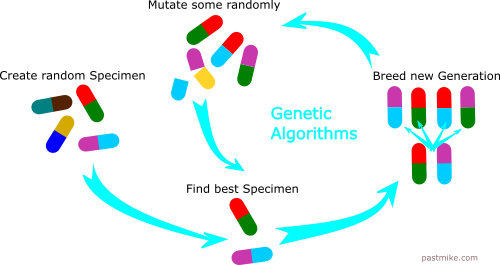
- 🆕
changepointGApackage -
GApackage can be customized (foreshadowing…)
Other software implementations
- Many other packages (e.g.,
wbs,segmented,strucchange,qcc,bcp,ggchangepoint, etc.)…
Problems with the state-of-the-art
- a lot of different packages
- a lot of different interfaces
- a lot of different return objects
- not all algorithms work with all models or penalty functions
tidychangepoint
Introducing tidychangepoint
- Joint work with Biviana Marcela Suárez Sierra (Universidad EAFIT)
![]()
- tidychangepoint
Universidad
What does tidychangepoint do?
- wraps functions from existing packages
- syntax that is compatible with
tidyverse - comprehensive architecture in a single package
- incorporating:
- new changepoint detection algorithms
- new parametric models
- new penalty functions
Using segment()
segment()wraps a variety of CDP algorithms
Recovering changepoints
- Use
changepoints()to recover the changepoint sets
Visualize the changepoint set

Recover estimated parameters
# A tibble: 5 × 10
region num_obs min max mean sd begin end param_mu
<chr> <int> <dbl> <dbl> <dbl> <dbl> <dbl> <dbl> <dbl>
1 [1,15) 14 -0.0137 0.0158 -0.00173 0.00779 1 15 -0.00173
2 [15,18) 3 -0.00813 -0.00650 -0.00750 0.000872 15 18 -0.00750
3 [18,52) 34 -0.00923 0.0160 0.00335 0.00628 18 52 0.00335
4 [52,87) 35 -0.0147 -0.000943 -0.00719 0.00315 52 87 -0.00719
5 [87,96) 9 -0.00518 -0.00142 -0.00290 0.00135 87 96 -0.00290
# ℹ 1 more variable: param_sigma_hatsq <dbl>Recover model fit information
Models provided
- Previously, “meanshift” model:
- regional means (\(\mu_i\)), national variance (\(\sigma^2\))
- \(\theta = \{ \sigma^2, \mu_0, \ldots, \mu_m \}\)
fit_meanshift_norm()
[1] "fit_lmshift" "fit_lmshift_ar1" "fit_meanshift"
[4] "fit_meanshift_lnorm" "fit_meanshift_norm" "fit_meanshift_norm_ar1"
[7] "fit_meanvar" "fit_nhpp" "fit_trendshift"
[10] "fit_trendshift_ar1" Experiment with different models
# A tibble: 8 × 12
pkg version algorithm params num_cpts rmse logLik AIC BIC MBIC MDL
<chr> <pckg_> <chr> <list> <int> <dbl> <dbl> <dbl> <dbl> <dbl> <dbl>
1 tidy… 1.0.0.… meanshif… <dbl> 4 0.00507 367. -714. -689. -689. -682.
2 tidy… 1.0.0.… meanshif… <dbl> 4 0.00490 367. -711. -683. -688. -677.
3 tidy… 1.0.0.… trendshi… <dbl> 4 0.00472 374. -718. -680. -703. -683.
4 tidy… 1.0.0.… splinesh… <dbl> 4 0.00439 381. -722. -671. -717. -684.
5 tidy… 1.0.0.… meanvar <NULL> 4 0.00507 367. -706. -671. -689. -674.
6 tidy… 1.0.0.… meanvar <NULL> 4 0.00507 367. -706. -671. -689. -674.
7 tidy… 1.0.0.… trendshi… <dbl> 4 0.00465 372. -711. -670. -698. -673.
8 tidy… 1.0.0.… nhpp <dbl> 4 0.00507 -59.3 149. 187. 163. 184.
# ℹ 1 more variable: BMDL <dbl>Try a different penalty
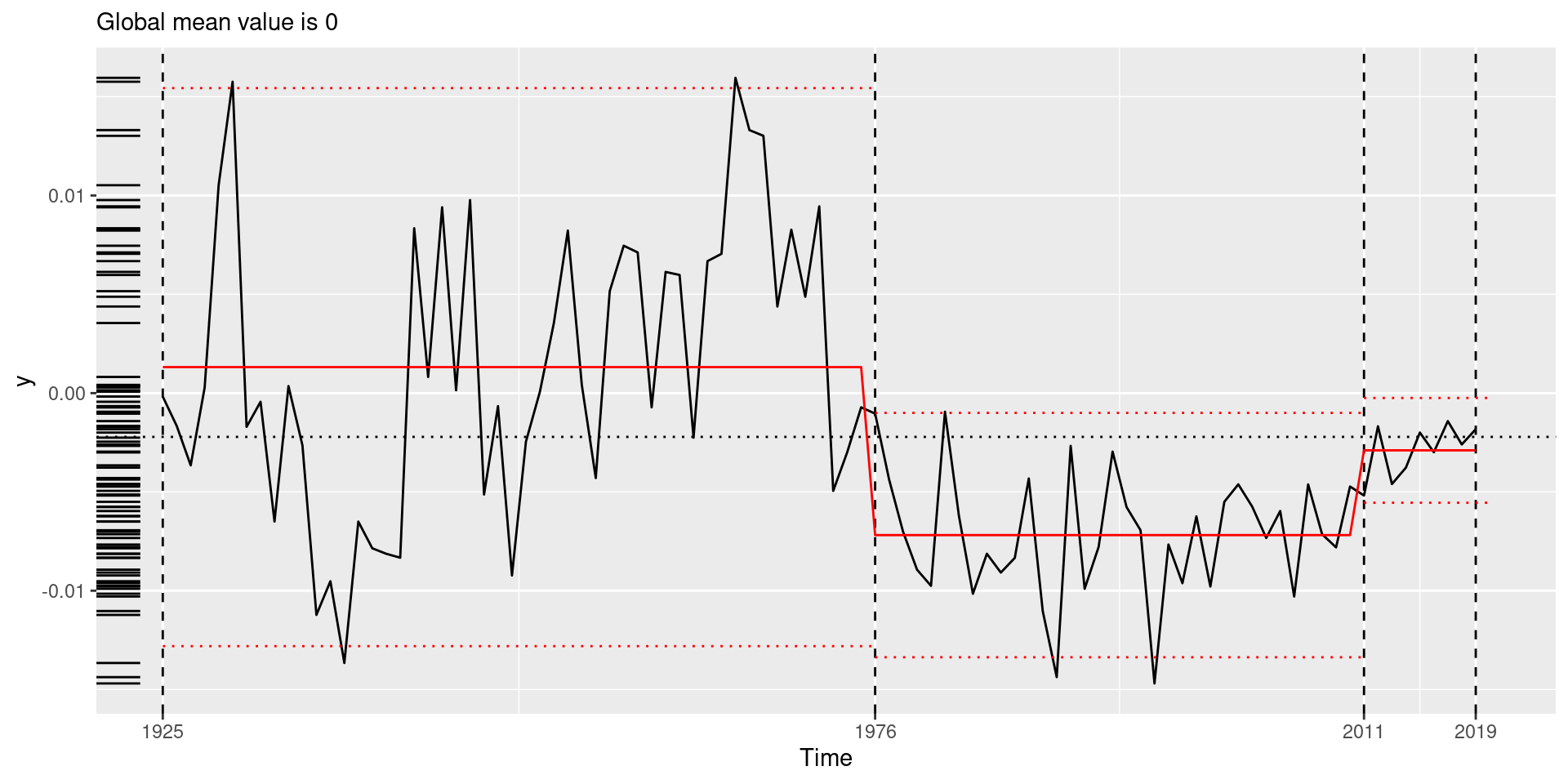
Try a different model
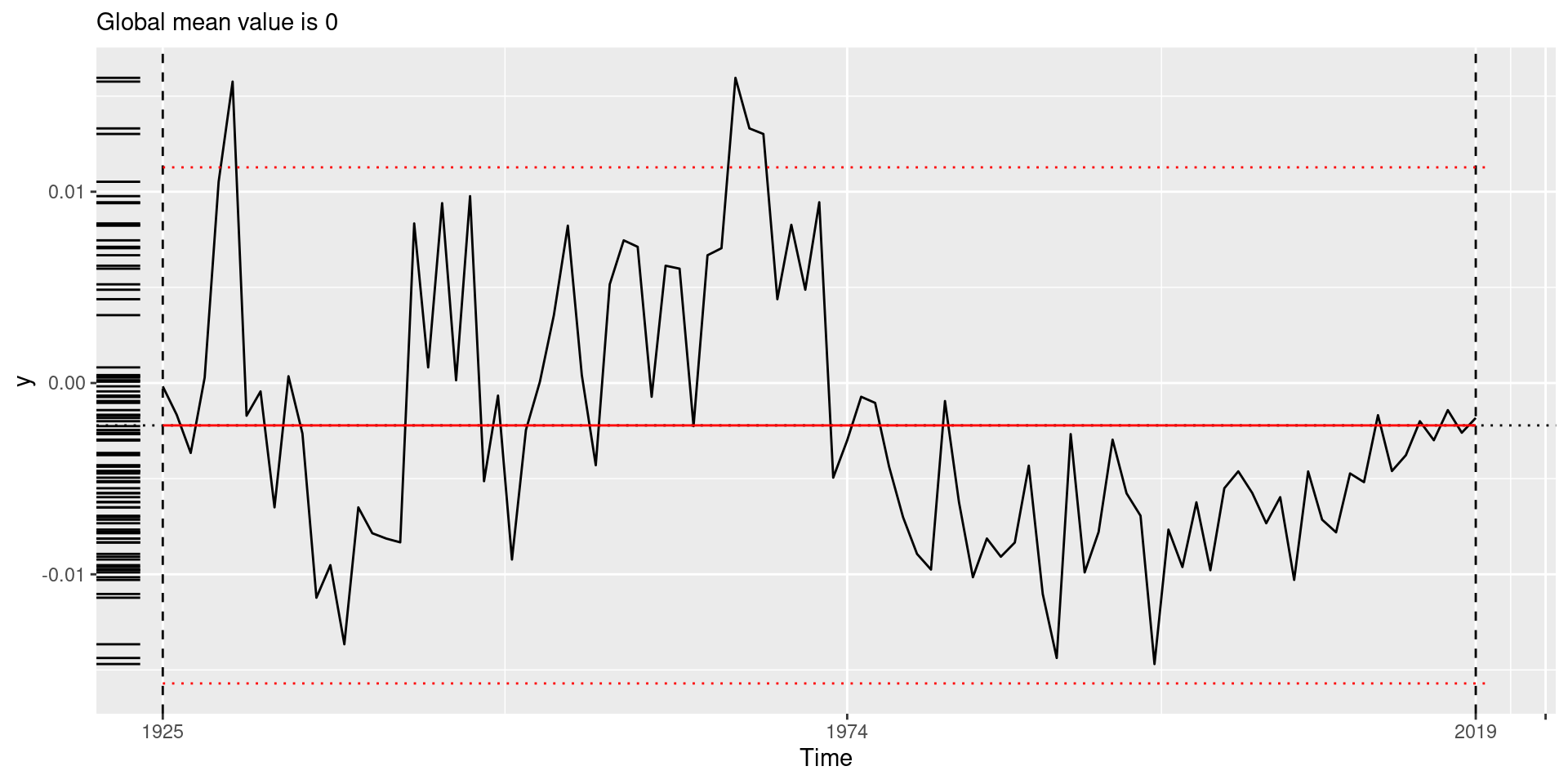
Try a different algorithm
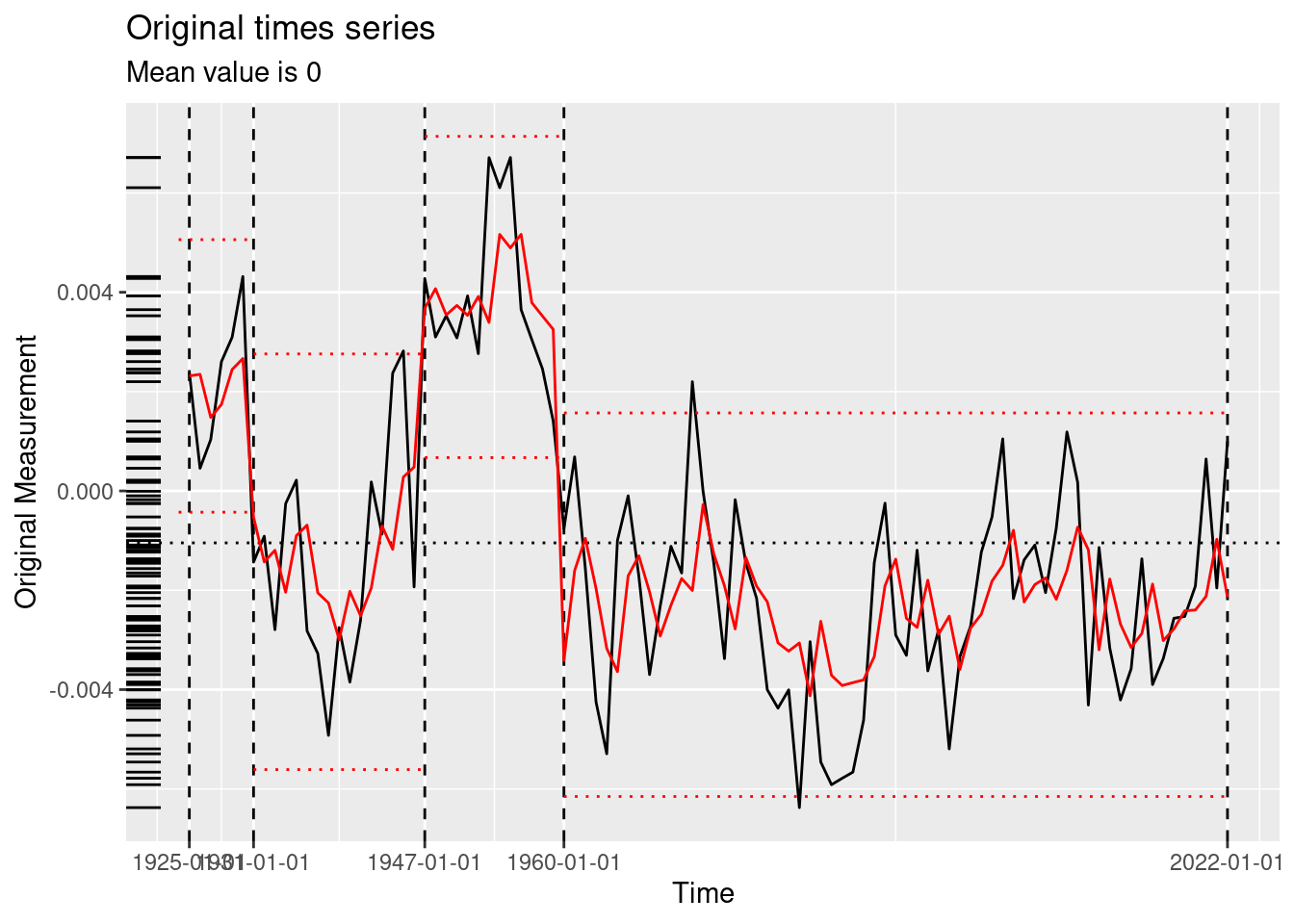
Roll your own genetic algorithm
tidychangepointincludes more than 10 models and 5 penalty functions- More can be user-defined!
Diagnose the model fit

Learn more
Thank you!!!

